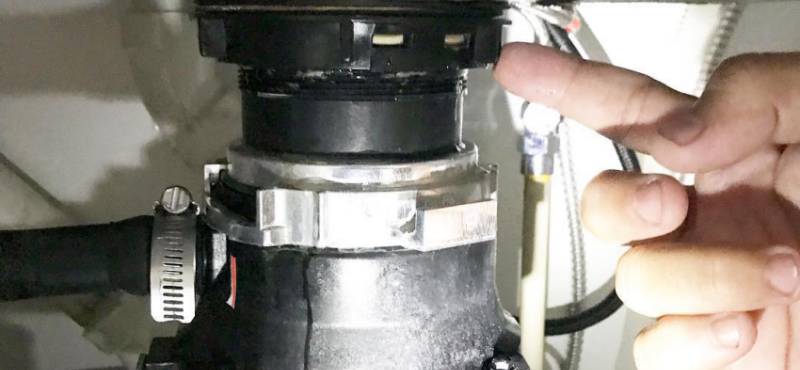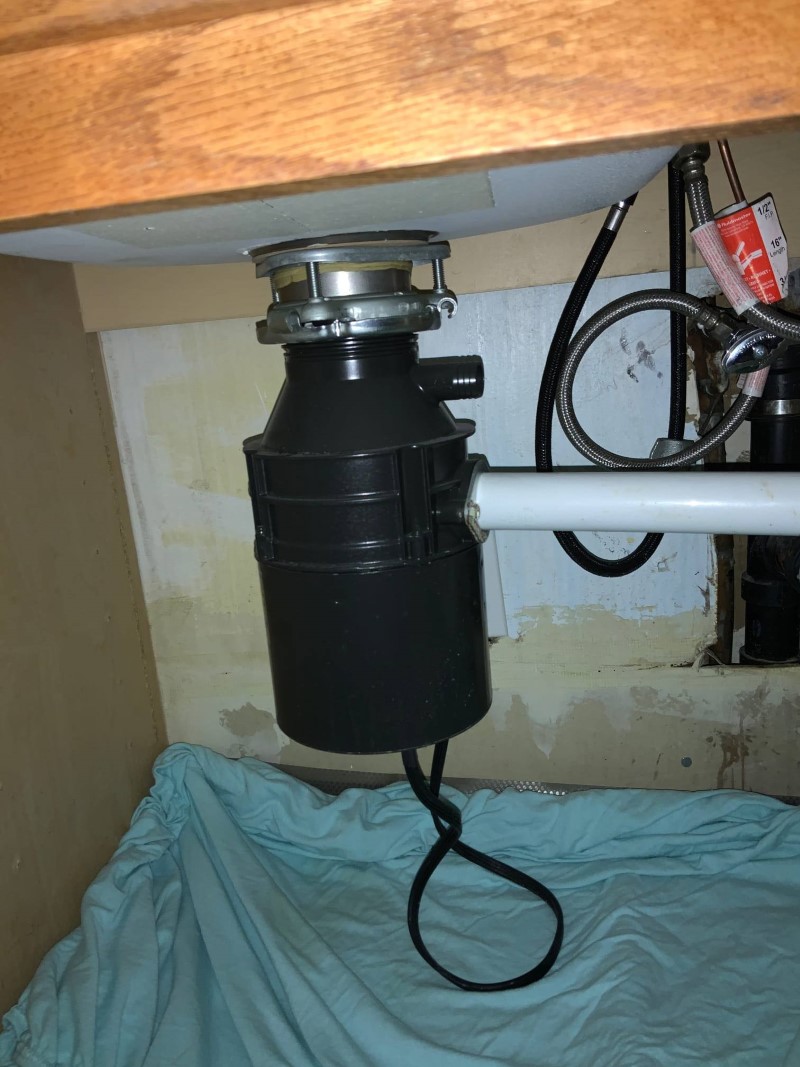Straightforward Steps to Stop a Leak in Your Garbage Disposal
Straightforward Steps to Stop a Leak in Your Garbage Disposal
Blog Article
The writer is making a few good annotation on Garbage Disposal Leaking From Bottom as a whole in this content beneath.

Waste disposal unit are vital cooking area appliances that help in disposing of food waste efficiently. Nevertheless, a dripping waste disposal unit can be an irritating and messy problem to handle. Luckily, lots of leakages can be taken care of conveniently with a couple of simple steps. In this article, we will discuss just how to deal with a dripping waste disposal unit successfully.
Introduction
Garbage disposals are mounted under cooking area sinks and are designed to shred food waste right into smaller sized pieces, allowing it to travel through the plumbing system easily. While these tools are usually trustworthy, leakages can take place in time as a result of wear and tear, loose links, or damages to the system.
Step-by-Step Overview to Fixing a Leaking Garbage Disposal
Shut off the Power
Prior to trying any type of fixings, make certain that the power to the waste disposal unit device is switched off to avoid the danger of electric shock.
Locate the Leakage
Recognize the precise location of the leakage and establish the cause
Tighten Links
Use a wrench to tighten up any type of loose links between the disposal device and the plumbing system.
Change Seals or Gaskets
If the leak is due to used seals or gaskets, eliminate the old components and change them with new ones.
Patching Fractures or Openings
For fractures or openings in the disposal unit, usage epoxy or an ideal patching material to seal the broken location.
Identifying the Source of the Leak
Before trying to deal with a dripping waste disposal unit, it is important to determine the source of the leak. This can usually be done with visual examination or by performing basic tests.
Visual Inspection
Check the garbage disposal unit meticulously for any type of signs of water leakage. Pay close attention to areas around seals, gaskets, and link factors.
Checking for Leakages
One means to examine for leakages is by running water through the disposal device and checking for any type of noticeable indications of leak.
Typical Sources Of Leakages in Garbage Disposals
Worn Seals and Gaskets
Seals and gaskets play a crucial function in protecting against water from leaking out of the waste disposal unit. With time, these elements can deteriorate, bring about leaks around the disposal device.
Loose Connections
The links between the garbage disposal and the pipes system can become loosened over time, triggering water to leakage out throughout operation.
Fractures or Openings in the Disposal Device
Physical damage to the waste disposal unit, such as cracks or holes in the real estate, can additionally cause leakages.
Tools and Materials Needed for Repairing a Leaking Waste Disposal Unit
Prior to beginning the repair work process, gather the required tools and materials, including a screwdriver, adjustable wrench, plumbing's putty, replacement seals or gaskets, and epoxy or patching material for fixing cracks or holes.
Testing the Waste Disposal Unit After Repair Service
When the fixing is total, test the waste disposal unit by running water through it to make certain that the leakage has been resolved.
Preventive Upkeep Tips to Avoid Future Leaks
To stop future leaks, it is vital to perform routine upkeep on your garbage disposal. This consists of maintaining it tidy, avoiding putting non-food products or tough objects down the disposal, and regularly looking for leakages or other issues.
Final thought
To conclude, repairing a dripping waste disposal unit is a fairly simple process that can be completed with standard devices and products. By adhering to the actions described in this short article and practicing precautionary maintenance, you can keep your garbage disposal in good working problem and prevent expensive repair services in the future.
What to Do About a Leaking Garbage Disposal
A leaking garbage disposal often goes unnoticed until you confront a sopping cabinet, a foul-smelling puddle, or an audible drip-drip-drip from the unit. The fix can be frustrating, too, because the leak can stem from a number of components in the system. Fortunately, with a little sleuthing, you can zero in on the leak and—depending on the exact location—stop the icky oozing and repair the component that caused it. Worst case scenario, if it turns out that the garbage disposal must be replaced, installing a new one is a reasonable do-it-yourself task for those with basic plumbing skills. Read on to keep the cash you’d otherwise hand over to a pro.
Prepare to find the leak
Prior to testing the garbage disposal for leaks, unplug it at the wall outlet and turn off the power from the breaker box to prevent electrical shock. Then insert a watertight sink stopper into your sink drain and wipe the unit dry with a clean cloth. In any handy container, mix a few drops of food coloring into a few cups of water, and pour the dyed water onto the sink stopper to help you locate the leak.
Investigate the source
the top, where the disposal meets the sink drain the side, where the dishwasher hose or main drain pipe connects to the disposal or the bottom of the unit Inspect each of these locations while gliding a light-colored rag over the unit; the dyed water will readily show on the rag and reveal the location of the leak. If a leak isn’t immediately apparent, remove the sink stopper and pour a few more cups of dyed water down the sink drain, then check for leaks again. Leaks near the top of the unit are more likely to show themselves while the sink is plugged, while side and bottom leaks are more noticeable while the sink is unplugged.
The metal sink flange that sits directly inside the sink drain is typically sealed around the top with plumber’s putty (a clay-like sealant) and then secured from under the sink with bolts. If the plumber’s putty deteriorates, or the bolts loosen, the flange can no longer form a watertight seal between the sink drain and the disposal—which could cause a leak at the top of the unit.
To reseal the leaky flange, you must first detach the garbage disposal. Start by loosening the screws securing the main drain pipe to the disposal, then loosen the screws in the metal clamp securing the dishwasher hose to the disposal and detach the drain pipe and dishwasher hose from the disposal. Loosen the screws in the mounting ring that connects the disposal to the metal mounting assembly beneath the sink, then pull down the disposal and carefully set it on a clean, dry surface. Loosen the bolts in the mounting assembly with a wrench, then pull down the mounting assembly and set it near the disposal.

I stumbled upon that piece on How to fix a pretty consistent leak from my garbage disposal while doing a lookup on the web. Sharing is nice. Who knows, you may very well be helping someone out. We thank you for reading our article about Why Is .
Call Today Report this page